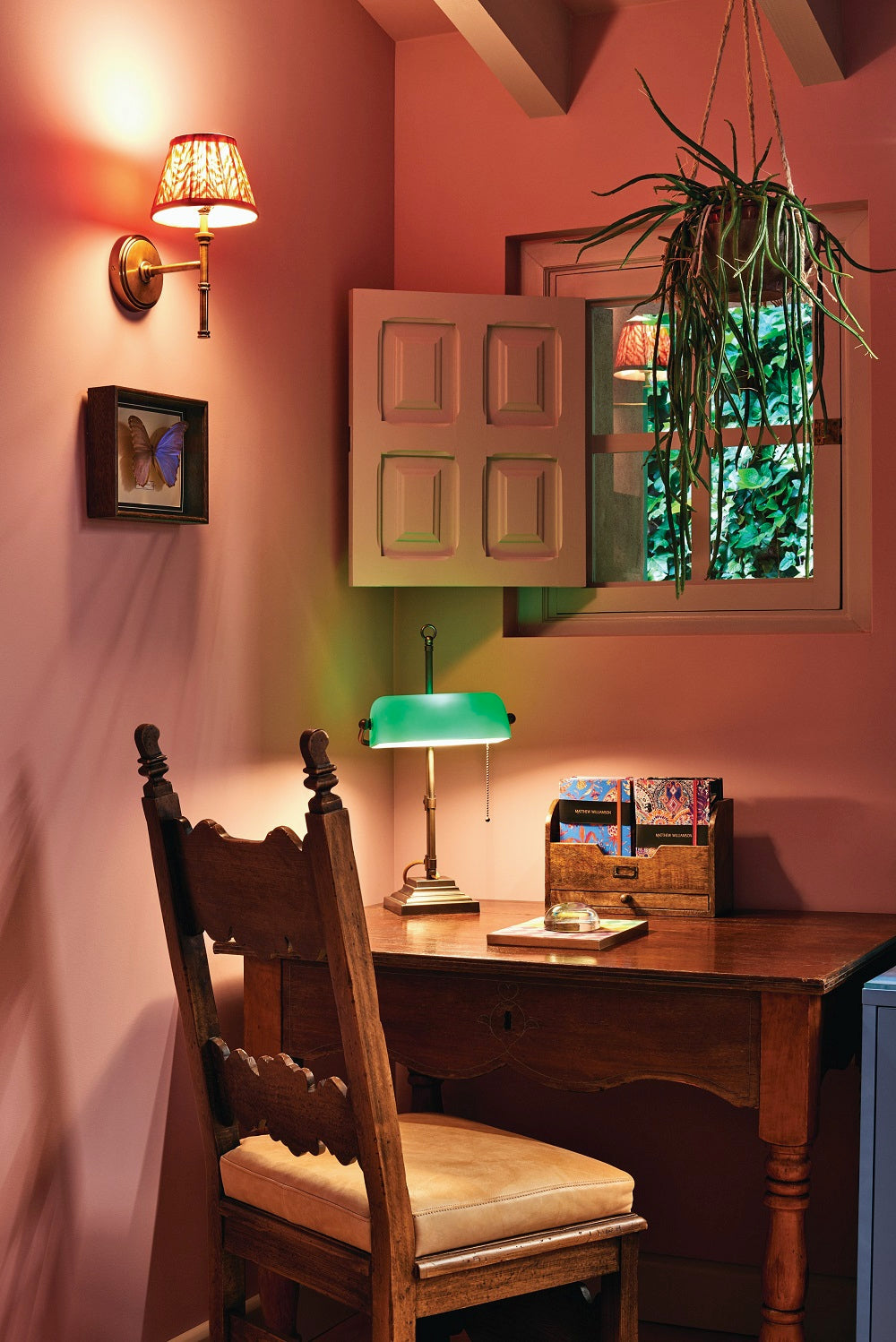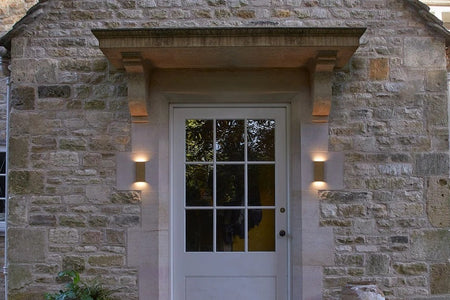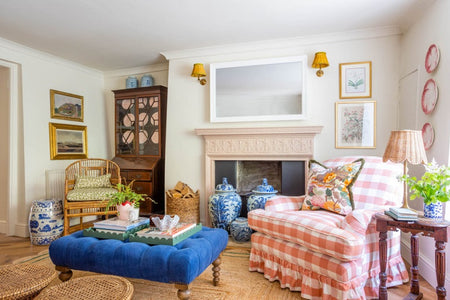
From lifting your spirits to warming your cockles, here’s how to use your lighting scheme to create atmosphere and mood...
Light isn’t just there to help us see stuff – it also has a tremendous influence on the way we feel. A sunny day can make us feel more energised, and in the same way the right lighting can help us feel more positive and alert – or calmer and more relaxed, or cosier, or even more romantic...
As a general rule, higher levels of lighting have a stimulating effect, while softer, low-level lighting encourages a sense of intimacy and restfulness. And with mood lighting you can harness these different elements, allowing you to create exactly the right feel and atmosphere. Here are seven lighting expert tips for creating mood within your space...
1) Use a range of different light sources
Many rooms rely on a single overhead fixture, such as a pendant, as the main source of light. However, used on its own an overhead light can create unwelcome glare and shadows.
Mood lighting involves using a variety of light sources, placed at different points within the space, so you can create a balanced ambience and adapt the mood according to different activities and times of day.
There are three main types of lighting: ambient lighting, which is the overall amount of light in a room (including the main light); task lighting, which is targeted light for specific tasks; and accent lighting, which is used to highlight features and create atmosphere. The best lighting schemes will include a mixture of these different types of lighting. (See our comprehensive guide to layering light in the home here.)
With mood lighting, you can supplement your brighter and more targeted ambient and task lighting by using a combination of wall lights, floor lamps and table lamps to provide a softer, more diffused light when the time comes to relax and unwind.

Belmond La Residencia, Mallorca (Including a Pooky wall light). Image: Matthew Williamson
2) Build atmosphere with wall lights
Wall lights are a very versatile form of lighting, and offer a lovely atmospheric alternative to overhead ceiling lights. As well as providing good ambient and task lighting, wall lights are ideal for introducing a sense of warmth and intimacy into a sitting room, dining area or even a bedroom.
Wall lights come in a huge range of styles, from the more traditional candle sconces and lanterns, to contemporary flush-mounted sconces and vertical torchiere style lights which add an extra decorative element.
When it comes to mood lighting, wall lights are perfect for creating a gentle wash of soft, indirect light. A set of uplights (or ‘pointy uppy’ wall lights) will cast the light upwards along the wall, emphasising the space and lending a more open feel, while downlights (‘pointy downy’ wall lights) will direct the majority of the light downwards and highlight the horizontal space – great for creating a cosy atmosphere, even in a larger space.
TIP: When positioning your wall lights, aim for the top of the wall light to sit at eye level, to avoid glare. Meanwhile, if you’re using wall lights as an atmospheric alternative to bedside lamps, place the lights at around shoulder height.
3) Set the tone with floor lamps
Floor lamps are a fabulous way of setting the tone and mood within a space. As well as providing plenty of good practical light, they’re great for brightening up dark or awkward areas as well as highlighting particular areas or features.
To create some lovely accent lighting in the sitting room, place a floor lamp with an opaque lampshade in a corner or alcove; or try placing a pair of matching floor lamps either side of the fireplace for a sense of balance and serenity.
Another great thing about floor lamps is they’re fully mobile, which makes them ideal for creating different 'mood zones' within your space.
Place a classic upright floor lamp or two just behind the sofa area in the living room, to create a defined space for relaxing and entertaining. Or make a cosy chill-out area by suspending a floor lamp over a favourite reading chair.
Meanwhile, a stylish floor lamp in the dining room will create a lovely warm ambience for eating and socialising. Choose a style that directs the light downwards, and aim to have the bottom of the shade sitting around eye level.
TIP: for some mood in the bedroom, place a classic floor lamp next to a floor-length mirror to gently reflect the light and create a calm and restful vibe.

Pooky floor lamp and shade in Soho Farmhouse
4) Create accents with table lamps
Table lamps are the little gems of the lighting world. As well as being beauties in their own right, they’re brilliant for adding mood and atmosphere to a space.
The lovely thing about table lamps is they offer a soft, welcoming glow which creates a real feeling of warmth and intimacy. A set of matching table lamps placed around the room at eye level will provide a layer of soft, low-level mood lighting for when it’s time to dial things down.
Table lamps are also ideal for accent lighting. Try placing a designer table lamp or two in the corners or alcoves in the sitting or dining area, or underneath cabinets and shelves, for a relaxing feel-good vibe.
5) Control the mood with dimmer switches
Once you have created your different layers of lighting, adding in some dimmer switches will give you even more flexibility.
Installing a series of dimmable lights in the sitting room, dining area and bedroom will allow you to easily switch from the brighter, more functional lighting of the daytime, to the softer light emitted by your choice of mood lighting in the evening. (Just remember to choose dimmable bulbs!)

A Pooky ikat shade in designer Emma Sherlock’s favourite corner of her house. Image credit.
6) Consider the ‘colour temperature’ of your lighting
When thinking about lighting for mood and atmosphere, it’s also important to take into account the ‘colour temperature’ of your lightbulbs.
Light is measured in degrees Kelvin (K). At the higher end of the scale (above 5000 K) are the ‘cooler’ blue and white lights, which are known to be harsher and more stimulating – so great for helping us to be alert and productive during the day.
Meanwhile, the ‘warmer’ yellows at the lower end of the scale (under around 3000 K) are ideal for helping to minimise harsh shadows and achieve a calm and cosy atmosphere.
7) Choose the right lampshades
Finally, lampshades are another important element when it comes to creating mood within a space.
As well as setting the interior design tone, your choice of lampshade materials can have a significant effect on the way the light diffuses, helping to soften it and reduce contrast and shadows.
For example, an opaque lampshade material such as velvet will direct the light up and down rather than outwards, which creates a lovely pooling effect. Meanwhile, a semi-translucent silk or linen lampshade will generate a beautiful soft, diffused light.

Bedroom with Pooky table lamp and shade by Barlow & Barlow











